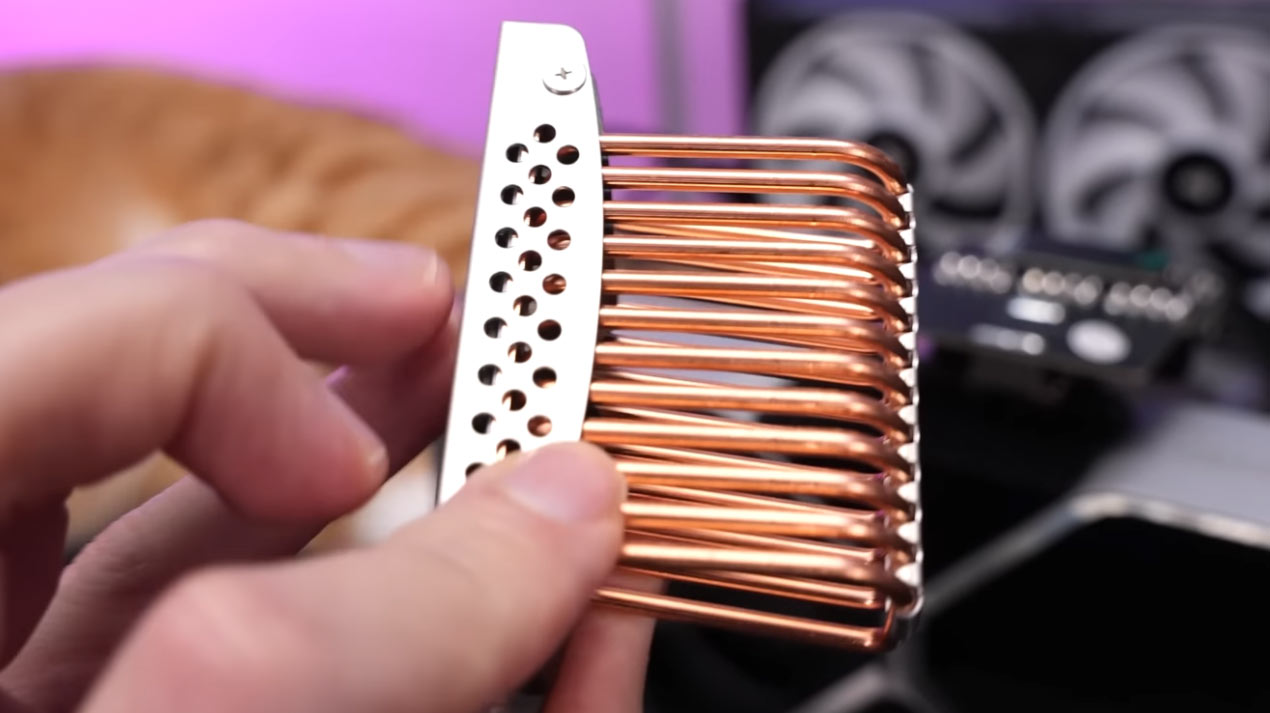
Four intriguing AliExpress-sourced SSD cooling products have been put under scrutiny by overclocking pro Der8auer. Just by glancing at some of these things, many may feel doubtful about their practical use. However, it is good to get product cynicism validated by Der8auer, and also find out that some of the SSD cooling products weren’t too bad. Spoiler: some were bad, but none were great.
The test platform used to check out the quartet of AliExpress SSD coolers used a Crucial T700 PCIe Gen5 NVMe SSD (plugged in a Gen4 slot). Der8auer revealed that this SSD was happy to deliver 7 GB/s read and write speeds when sufficiently cooled. He provided some other baselines, in terms of thermals. For example, he provided read/write test thermal readings using the Asus Maximus Z790 Hero heatsink in place, and tested the system with no heatsink at all.
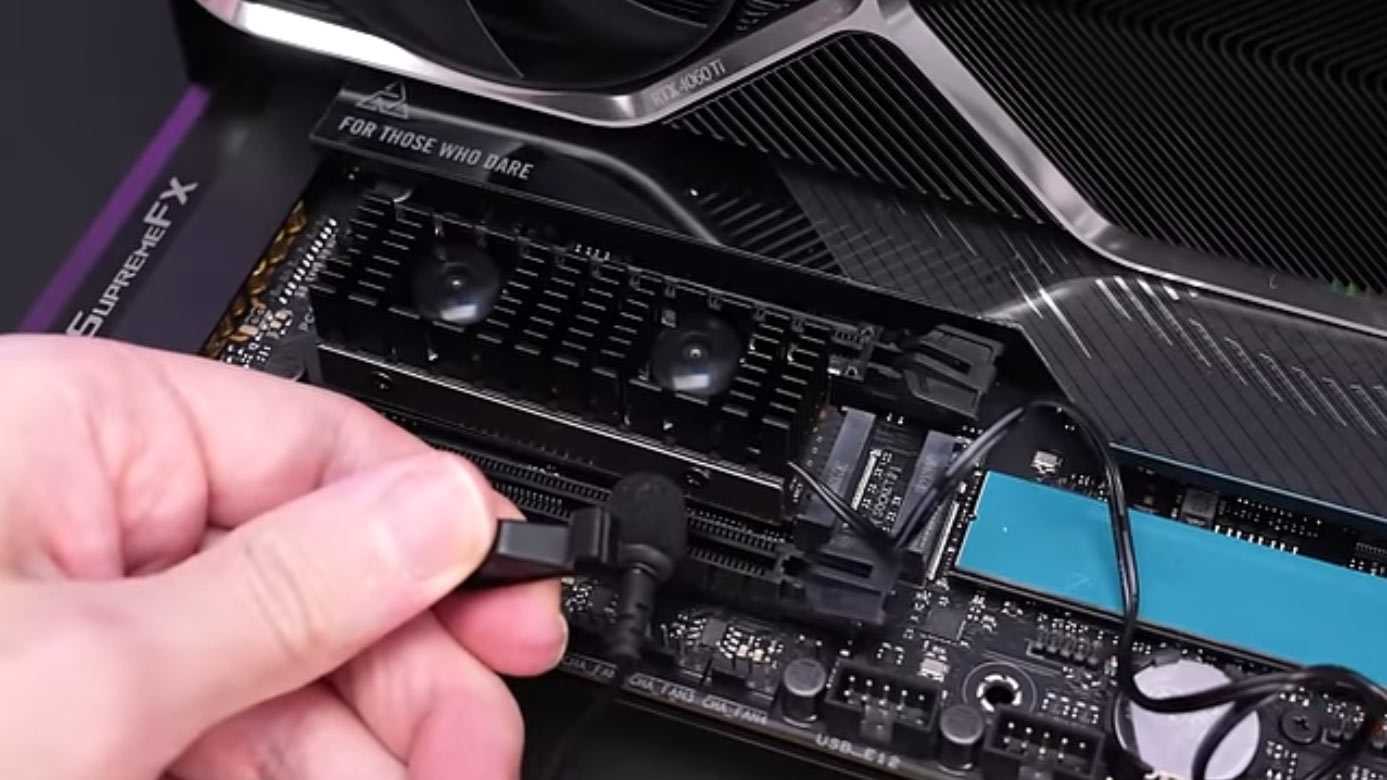
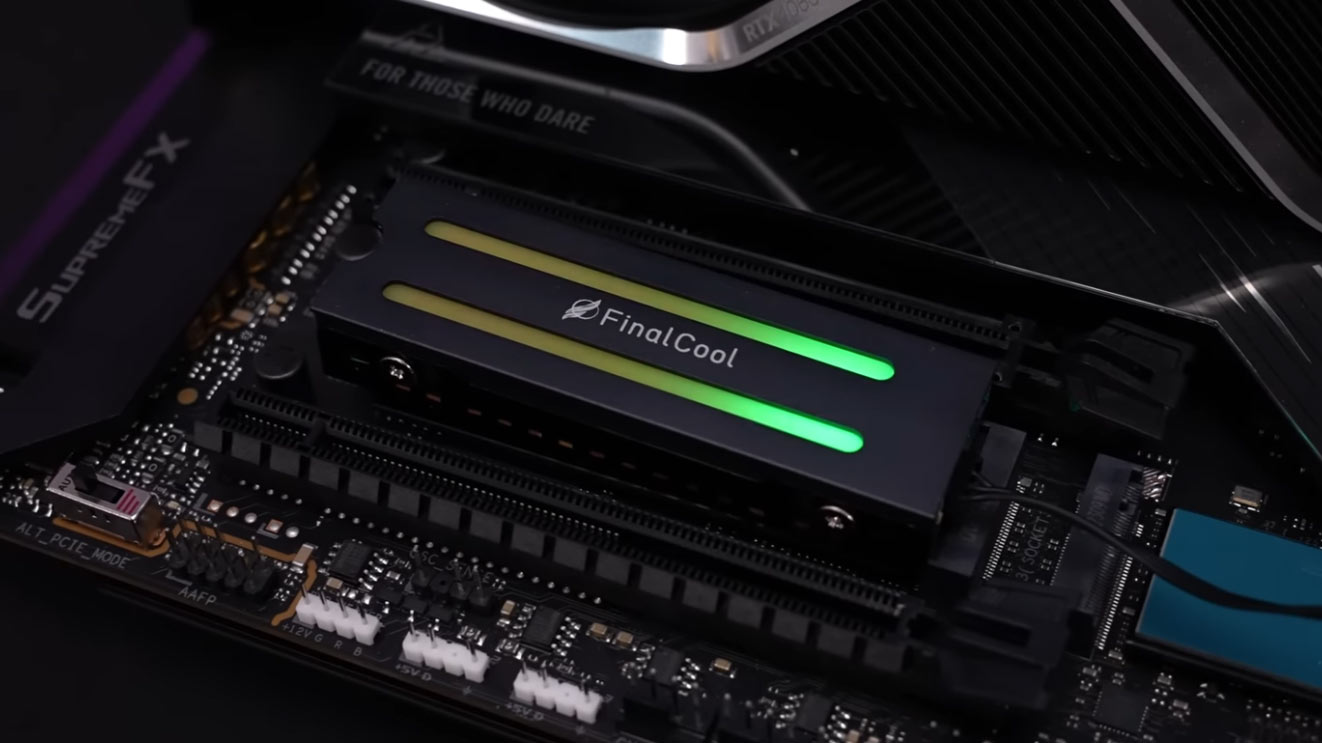
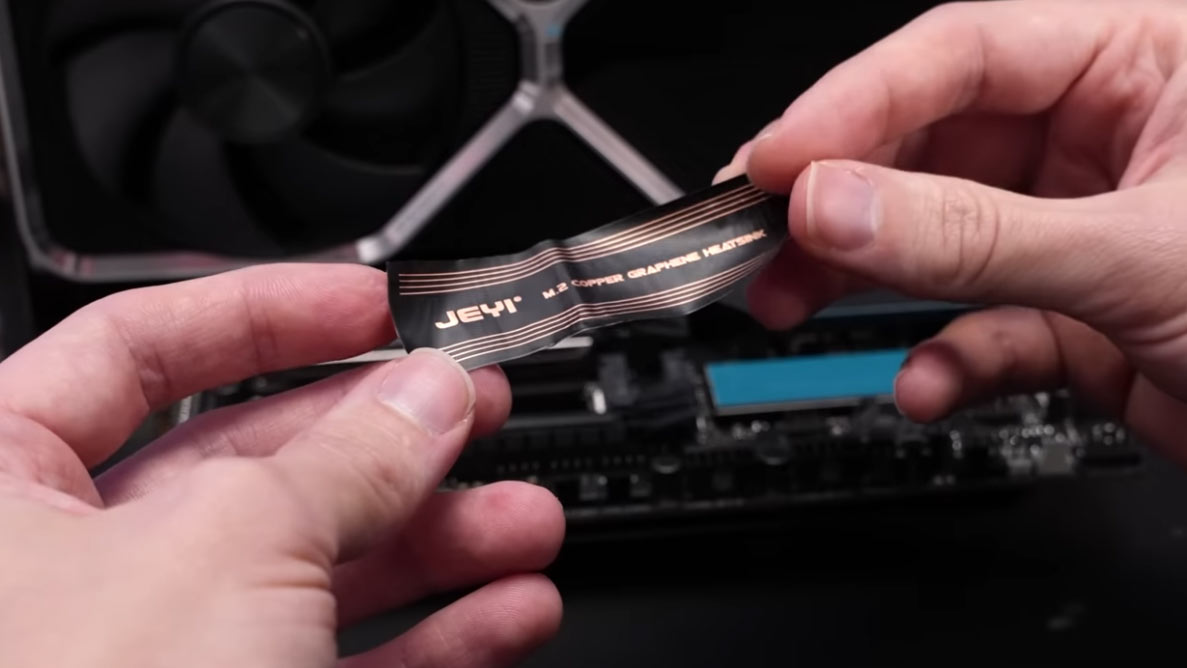

The first AliExpress-sourced heatsink under test was the Jui Shark M.2-Five Dual Engine. Initial impressions were that this was a practical-looking blackened-finned cooler. It was first tested without the pair of embedded active fans powered up. Running this way, Der8auer observed the SSD running at a stable 52C when idling.
Now Der8auer plugged the provided power line into the Jui Shark. Its tiny fans run at up to 8,000 RPM, so users might expect an unpleasant high-pitched noise when they are running, and this was confirmed. Though they weren’t loud fans, so the noise might not be heard if the system was encased. The Jui Shark fans were effective, with reported SSD idling temps down to 40C.
Running some read/write loads with the actively cooled Jui Shark M.2-Five Dual Engine showed it delivered a > 10C temperature delta benefit. The cooler was judged to be “definitely doing its job.” However, Der8auer criticized the cooler’s bulk and potential whiney noise profile.
The second M.2 SSD cooler under scrutiny was from FinalCool. The firm has produced a light and slim SSD cooler, though it doesn’t seem like any cooling technology is in place. It benefits from RGB, though, with a switch on the side to configure various lighting modes.
FInalCool’s product performance was ineffective, with idle temps over 70C and throttling under minor loading. Crystal Disk Mark caused the system to crash, but it ran for about 150 seconds before the blue screen of death. Der8auer recons the FinalCool heatsink might only be usable with Gen3 or Gen2 drives.
Jeyi’s M.2 Copper Graphene Heatsink is an extremely thin cooling solution, and its gumstick profile might be slimmer than a sliver of Wrigleys. The product website says it is 0.15mm thick and that it can reduce an SSD’s operating temperature by 10 degrees Celsius. Der8auer put both these claims to the test and did some close-up material inspection.
Firstly, the overclocking expert’s micrometer measurements supported the 0.15mm (0.01-inch) product thickness specification. Materials analysis confirmed copper and carbon materials were used, but it wasn’t certain whether the carbon was graphene.
Following up with performance testing, and at idle, it looks Jeyi’s SSD cooling product makes little or no difference. When Crystal Disk Mark gets powered up, thermal throttling affects performance rapidly. The system crashed before the end of the tests.
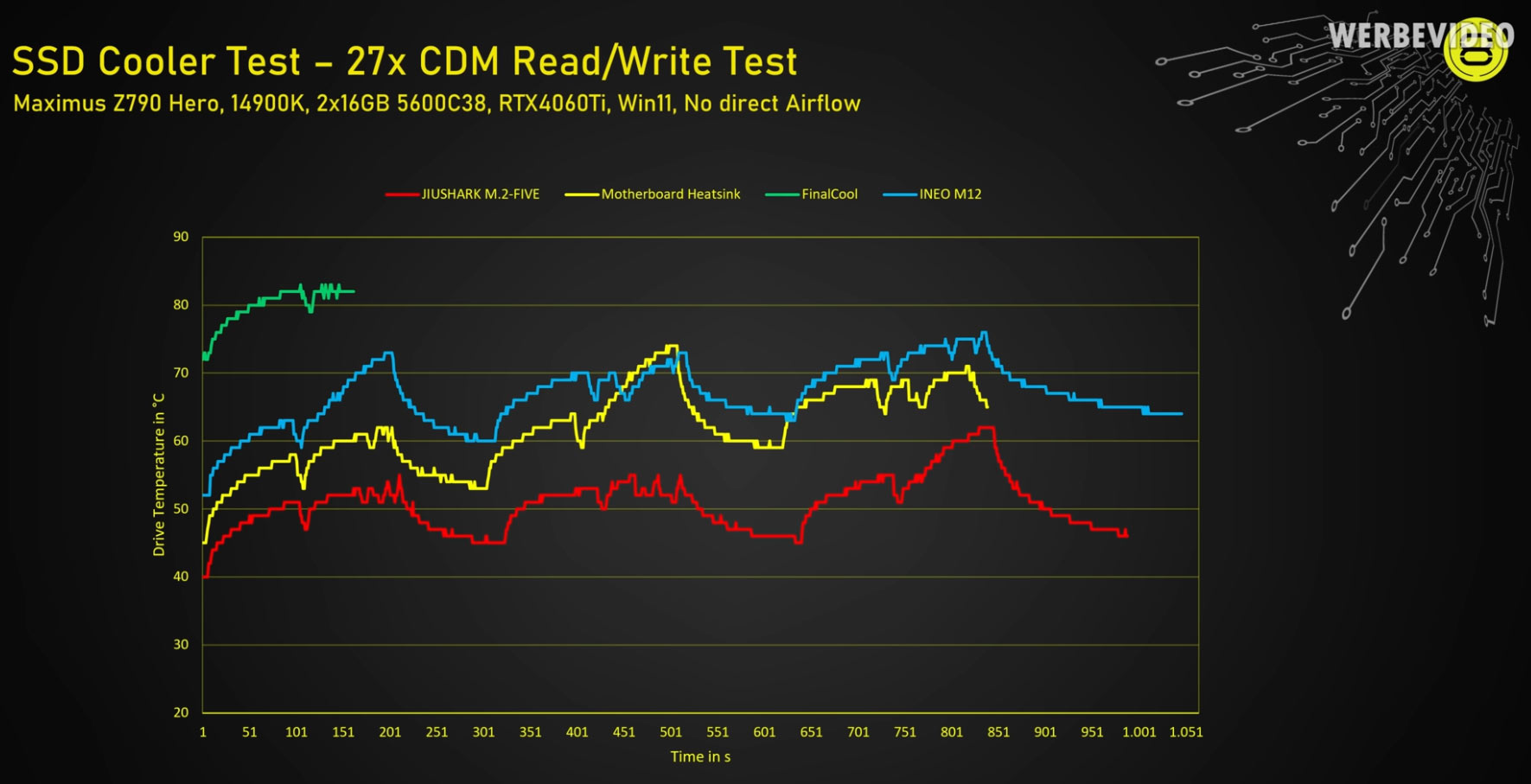
Last but not least, Der8auer looked at the iNeo (USA) M12 SSD cooler. The design raised lots of questions, but Der8auer seemed quite optimistic about this product, perhaps due to the size of this thing. In testing the iNeo performed quite similarly to the stock heatsink that came with the Asus motherboard. However, while your motherboard gains a graceful arbor, the design uses up a lot of space.
After completing tests of the iNeo’s performance, Der8auer thought it was worthwhile checking if the 2.5mm copper heatpipes were actually heatpipes and not just wires or tubes. His suspicions were correct, a quick hacksaw job revealed the “copper heatpipes” were just 2.5mm copper (plated?) wires.
Der8auer promises a follow-up video, or two, with more AliExpress oddities under his critical eye, plus some electron microscope analysis of the poor-performing Jeyi M.2 Copper Graphene Heatsink. The analysis will hopefully show whether the carbon material used was actually graphene, or not.







